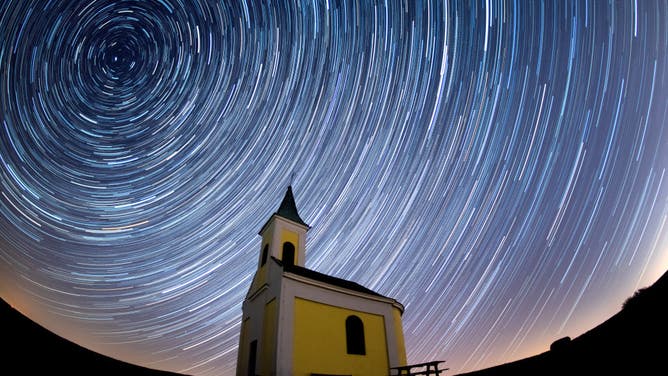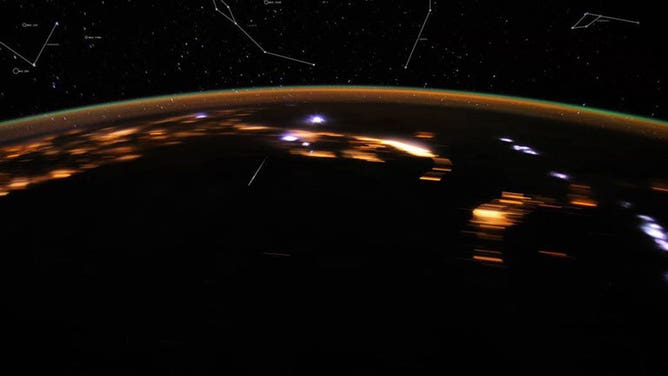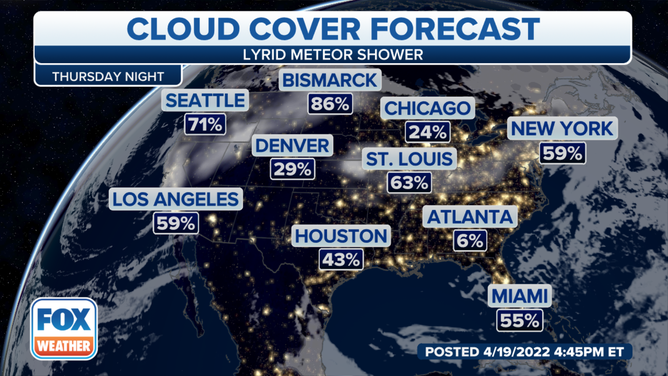Lyrid meteor shower peaks just in time for Earth Day
It's known as one of the oldest meteor showers and typically peaks in late April every year
Lyrid meteor shower peaks Thursday night, just in time for Earth Day
It's known as one of the oldest meteor showers and typically peaks in late April every year.
The Lyrid meteor shower will peak just in time for Earth Day.
It's known as one of the oldest meteor showers and typically peaks in late April every year.
The predicted peak for this year is late Thursday night, just before midnight.
What are the Lyrids?

NIEDERHOLLABRUNN, AUSTRIA - APRIL 21: (EDITORS NOTE: Multiple exposures were combined to produce this image.) Startrails are seen during the Lyrids meteor shower over Michaelskapelle on April 21, 2020 in Niederhollabrunn, Austria.
((Photo by Thomas Kronsteiner/Getty Images))
NASA says that the Lyrids are one of the oldest known meteor showers and observed for 2,700 years. The first observation dates back to 687 BC by the Chinese.
While not as famous as the Perseids, astronomers say that as many as 100 meteors per hour can be seen during the shower.
ASTRONOMICAL EVENTS YOU'LL WANT TO WATCH IN 2022
The Lyrids shed from the comet C/1861 G1 Thatcher. NASA says that every year when the Earth passes through the debris trails of comets, bits collide with our atmosphere, where they disintegrate to create fiery and colorful streaks in the sky.
They often leave glowing dust trains behind them and can be seen for several seconds.
When and where to watch

On the night of April 21, the 2012 Lyrid meteor shower peaked in the skies over Earth. While NASA allsky cameras were looking up at the night skies, astronaut Don Pettit aboard the International Space Station trained his video camera on Earth below.
While the shower will pass by Earth from April 14-30, the predicted peak this year is at 4 UTC on April 22, according to EarthSky.
Best viewed under dark skies, skywatchers in the Northern Hemisphere will see the most Lyrids after moonset and before dawn.
HOW THE TELESCOPE BECAME OUR WINDOW INTO THE UNIVERSE
NASA says that the meteors will appear to radiate from the constellation Lyra, but they can appear anywhere in the sky, which is why it is essential to lie on your back and take in as much sky as possible.

Percentage of cloud cover for late Thursday evening.
(FOX TV Digital Team)
Most of the country will have a good chance of seeing meteors late Thursday into early Friday.
With another storm system affecting the Pacific Northwest and Northern Plains, mostly cloudy conditions will be likely.
Download the FOX Weather app for your local forecast.
